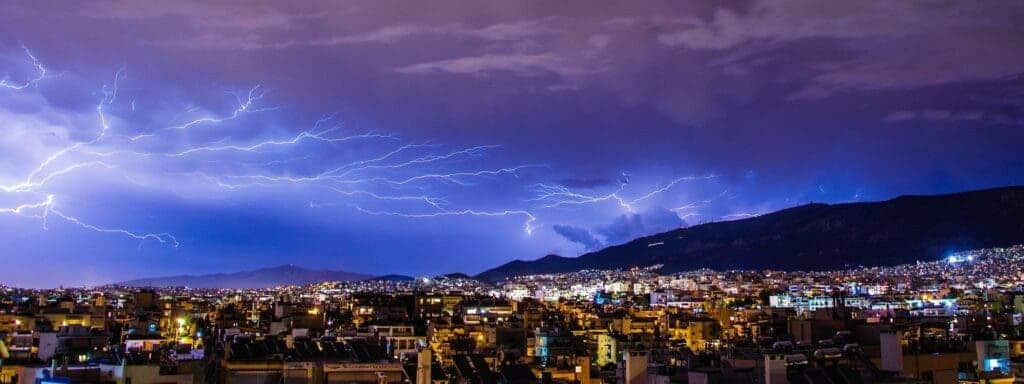
During the spring of 2020, when the coronavirus pandemic caught everyone with their pants down, governments scrambled to close their borders and impose strict lockdowns in order to curb the spread of a virus that was rife with uncertainty. Human activity slowed to a crawl and, as a result, the air and water became cleaner. Fewer vehicles on the road meant urban spaces became safer for animals and much quieter. There were even viral reports of dolphins in the canals of Venice, Italy, and pumas in the streets in Santiago, Chile, prompting many to triumphantly claim ‘nature is healing’.
The ‘healing’ part is hyperbolic, but what’s clear is that nature went through significant changes as a result of our lockdowns — and it even showed in the sky. At the recent American Geophysical Union meeting in New Orleans, scientists at MIT reported that a drop in atmospheric aerosols due to shuttering of activity coincided with a drop in lightning.
According to a new study, reduced human activity lowered the number of aerosol emissions — microscopic particles in the atmosphere too small to see with the naked eye that can result from pollution due to fossil fuels — affecting the electrical charge of clouds and their ability to form lightning.
Between March 2020 and May 2020, there were 19% fewer intracloud flashes (the most common type of lightning) compared to the same three-month period in 2018, 2019, and 2021.
Earle Williams, a physical meteorologist at the Massachusetts Institute of Technology, and colleagues used three different methods to measure lighting, all of which pointed to the same trend of diminished lightning activity associated with diminished aerosol concentration.
Atmospheric aerosols absorb water vapor thereby helping form cloud droplets. Without any aerosols, we wouldn’t have clouds. When there are more aerosols in the atmosphere, the water vapor becomes more widely distributed across droplets, making them smaller and less likely to coalesce into rain droplets. As a result, clouds grow larger but precipitation is suppressed.
Furthermore, clouds seeded with fewer aerosols have fewer positively charged ice particles in the clouds to react with negatively charged hail in the lower part of the cloud, which explains why we had less lightning that strikes the surface or discharges into the air.
For instance, lightning flashes are more frequent along shipping routes, where freighters emit particulates into the air, compared to the surrounding ocean. And the most intense thunderstorms in the tropics brew up over land, where aerosols are elevated by both natural sources and human activity.
Areas with the strongest reduction of aerosols also experienced the most dramatic drops in lightning events. These include Southeast Asia, Europe, and most of Africa. North and South America also experienced a reduction in lightning, but not as dramatic as in other places. Researchers believe that some of the drop in aerosol pollution due to human activity in the Americas was offset by the catastrophic wide-scale fires experienced in 2020.
Lightning is an important component of the weather system, which is why scientists are so interested in understanding it better. Also, from an ecological perspective, lighting interacts with air molecules to produce nitrogen oxide, a family of poisonous, highly reactive gases.






